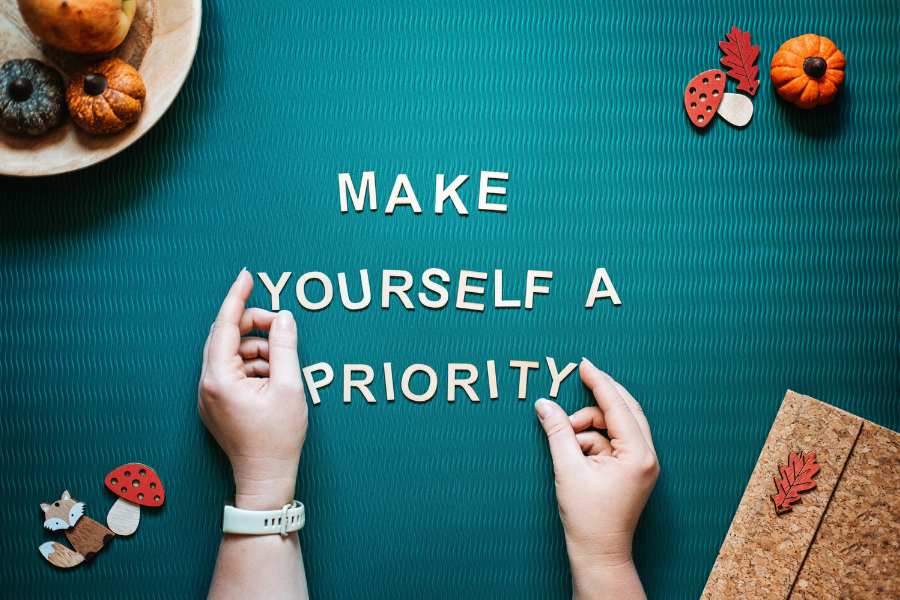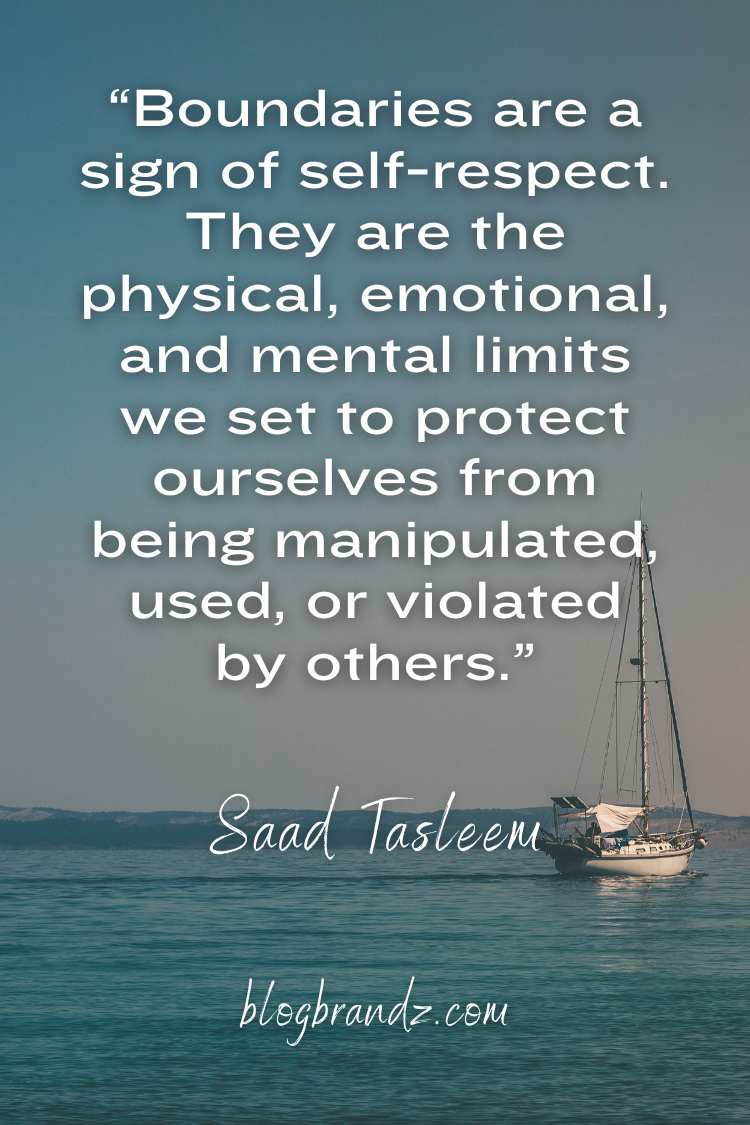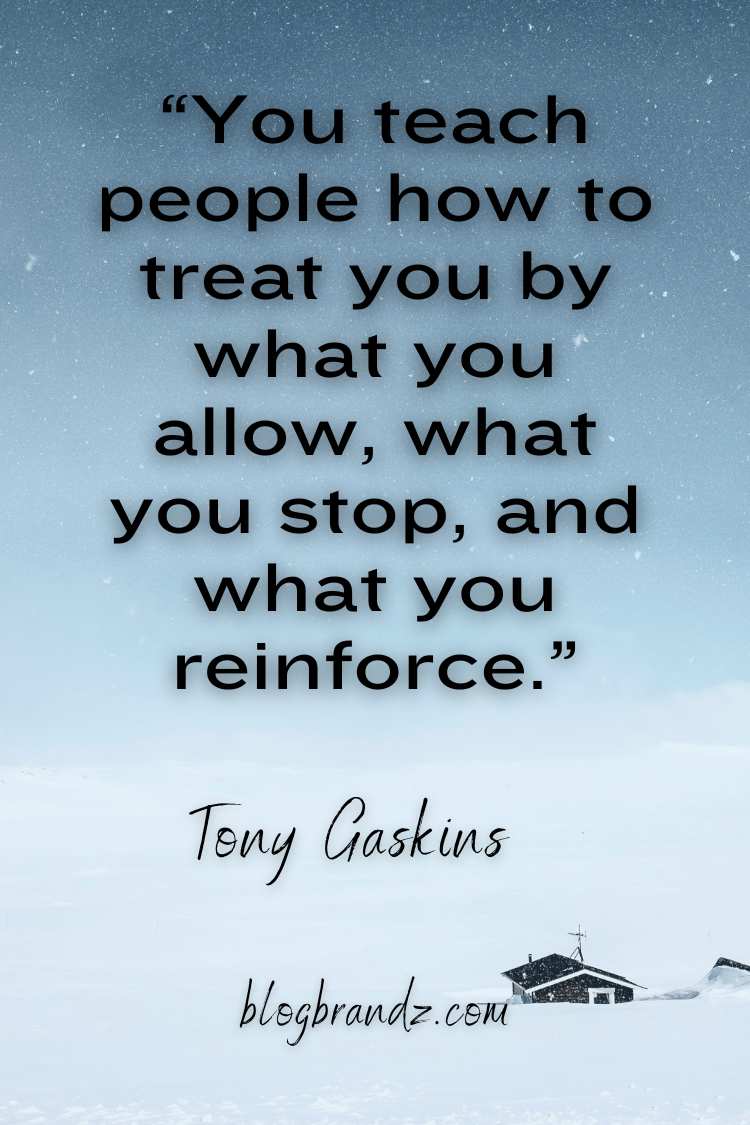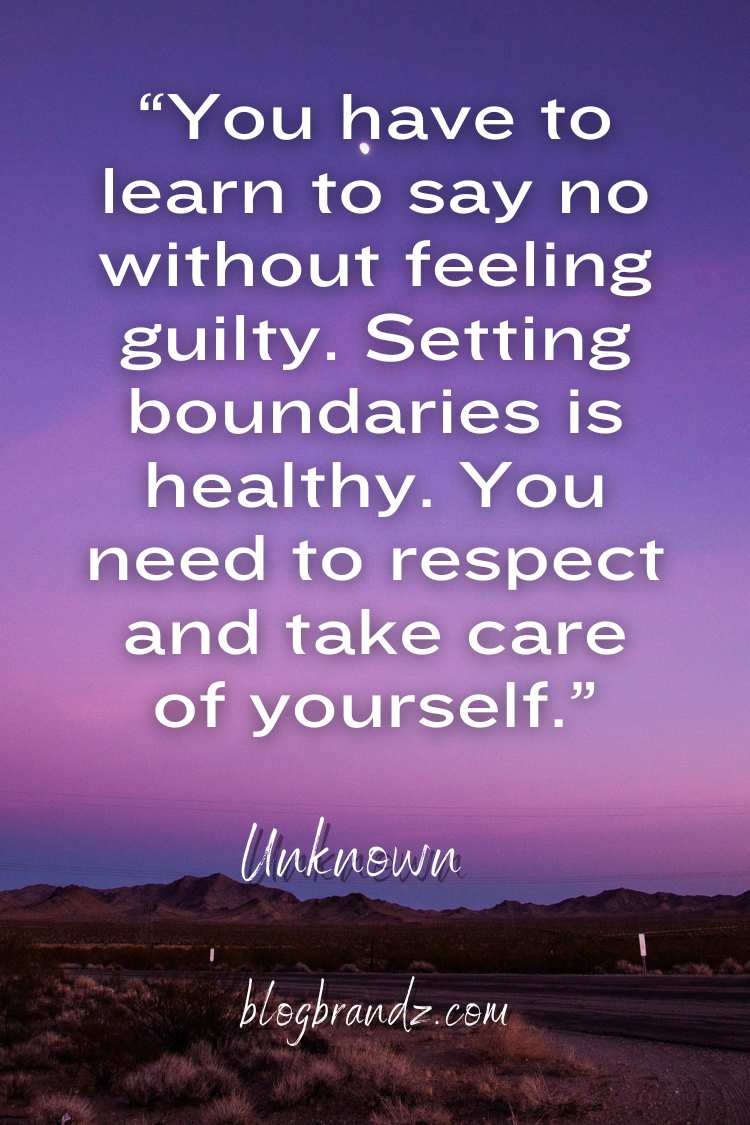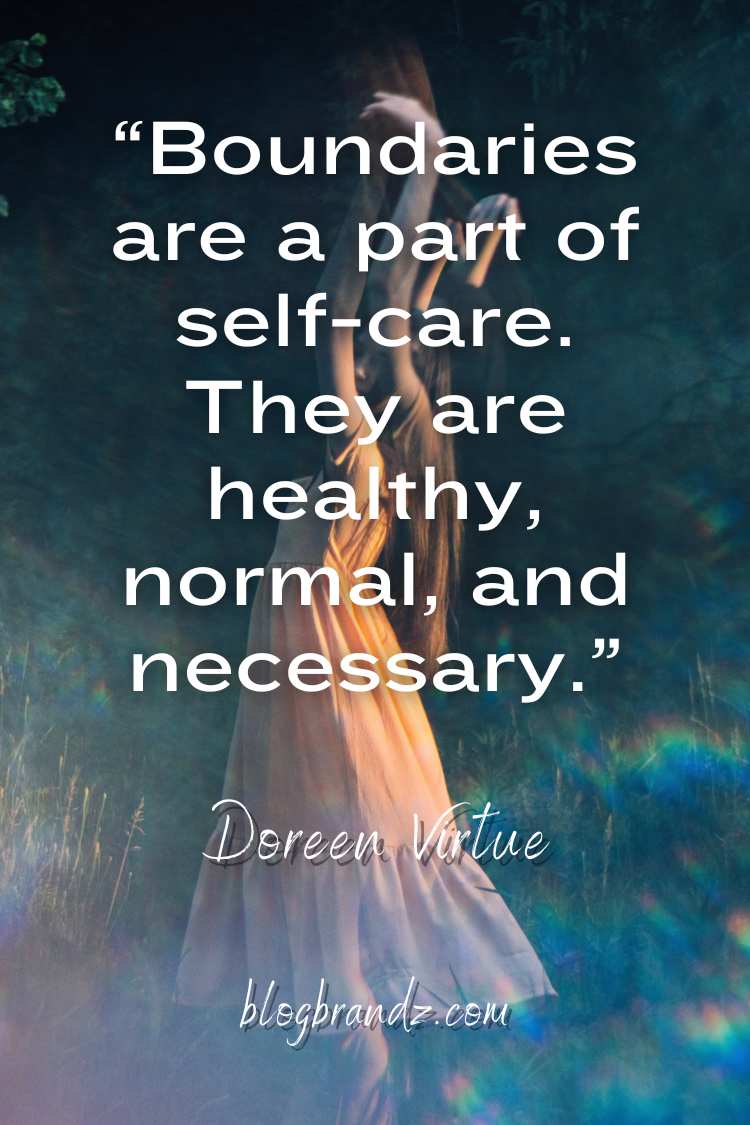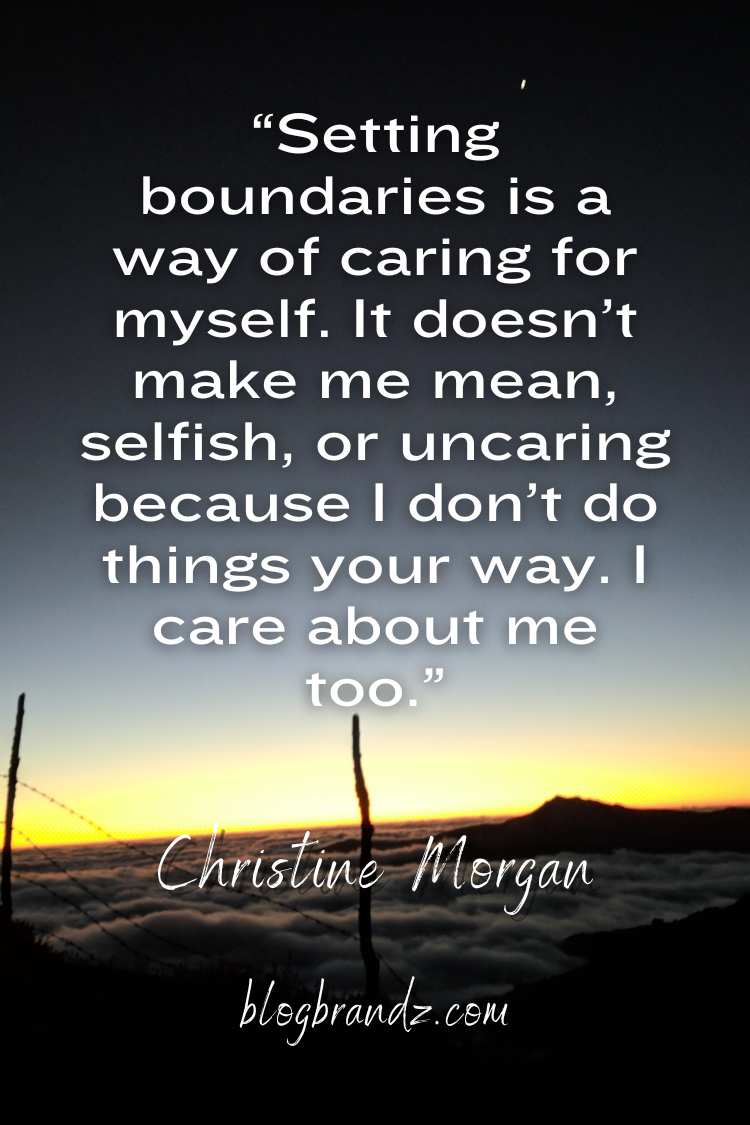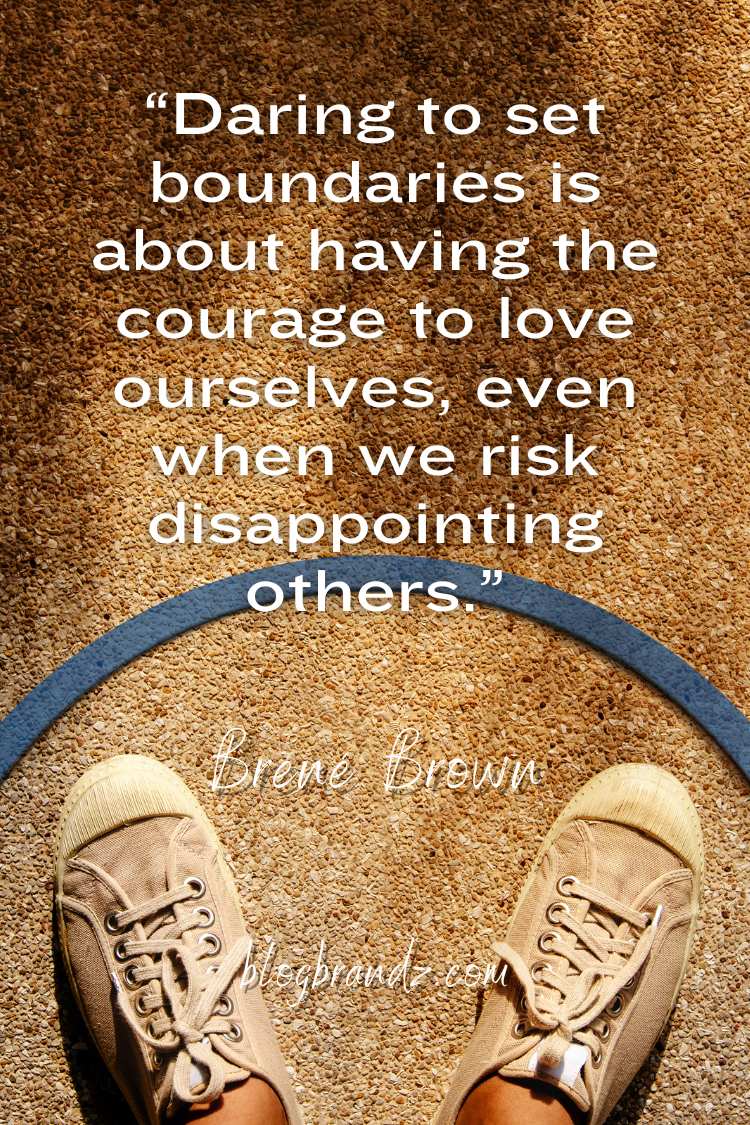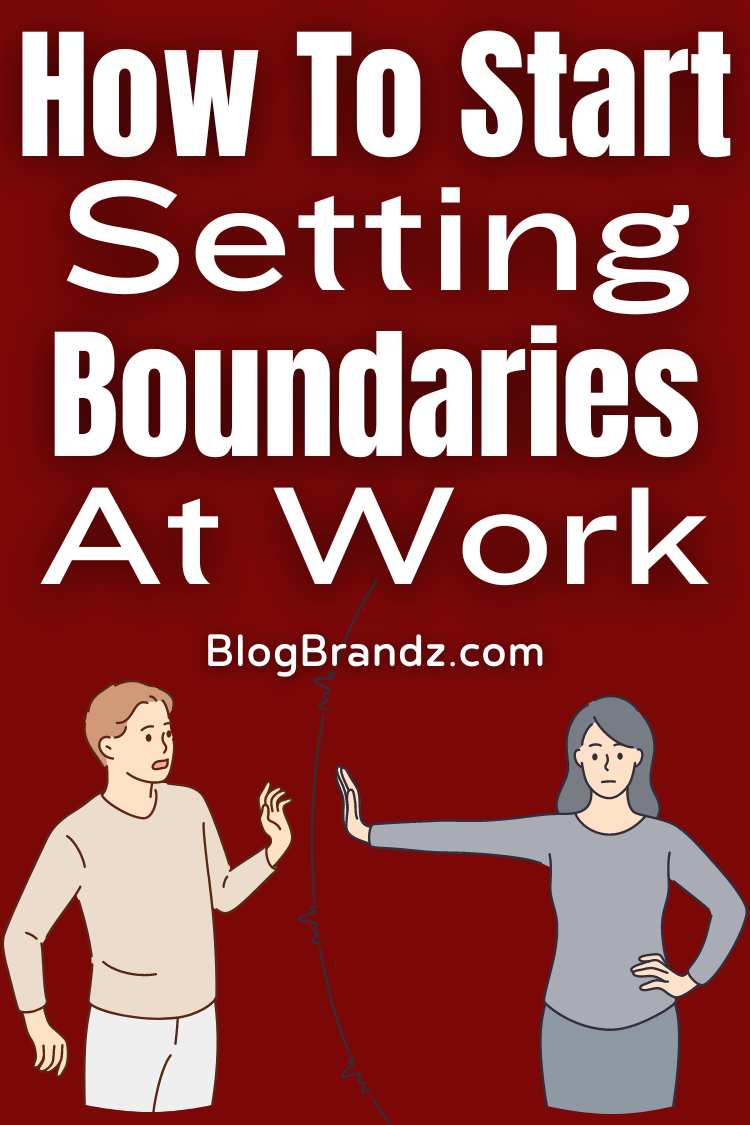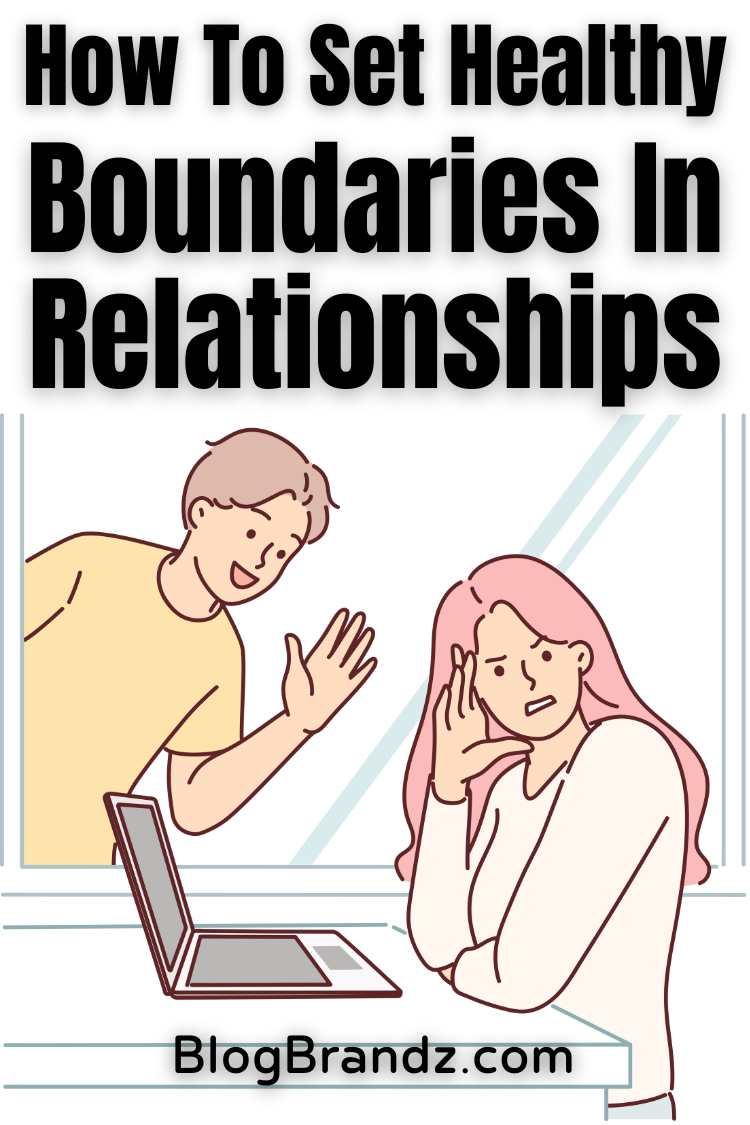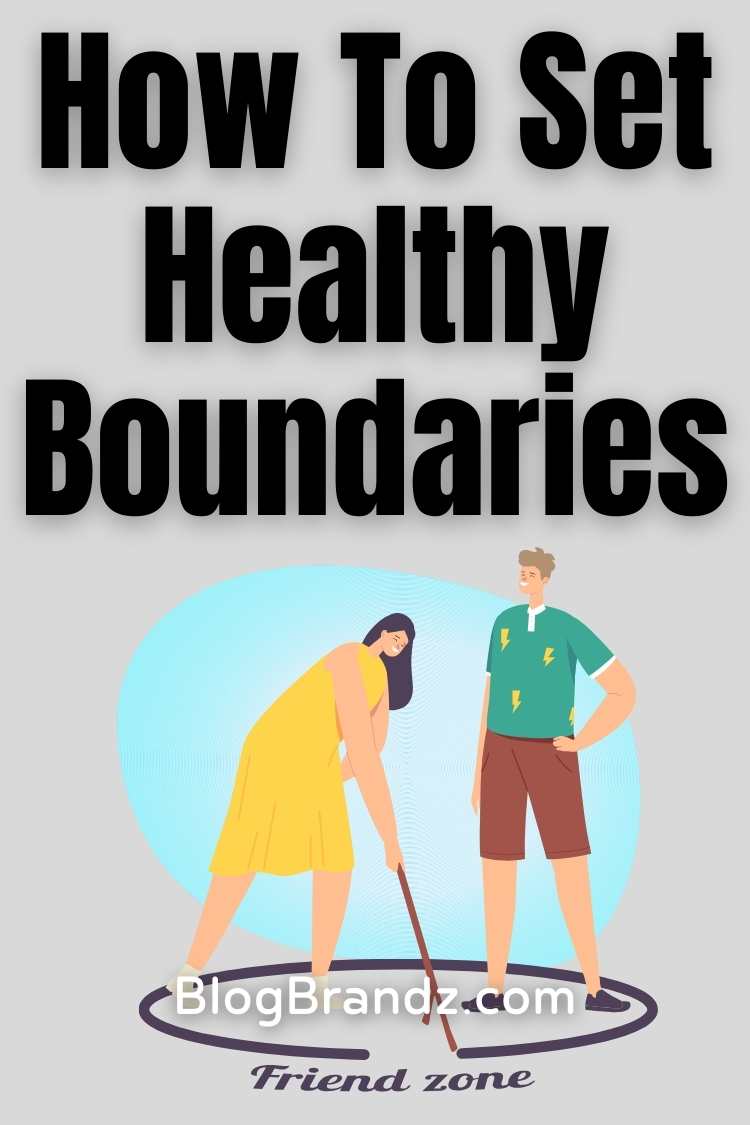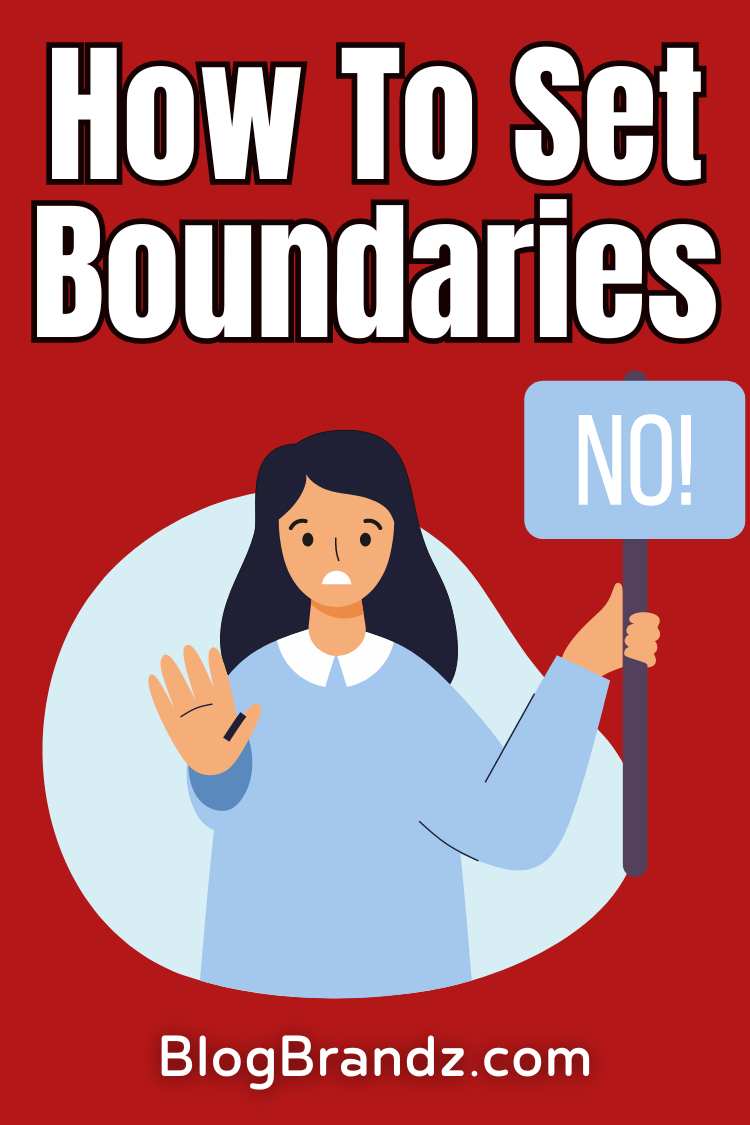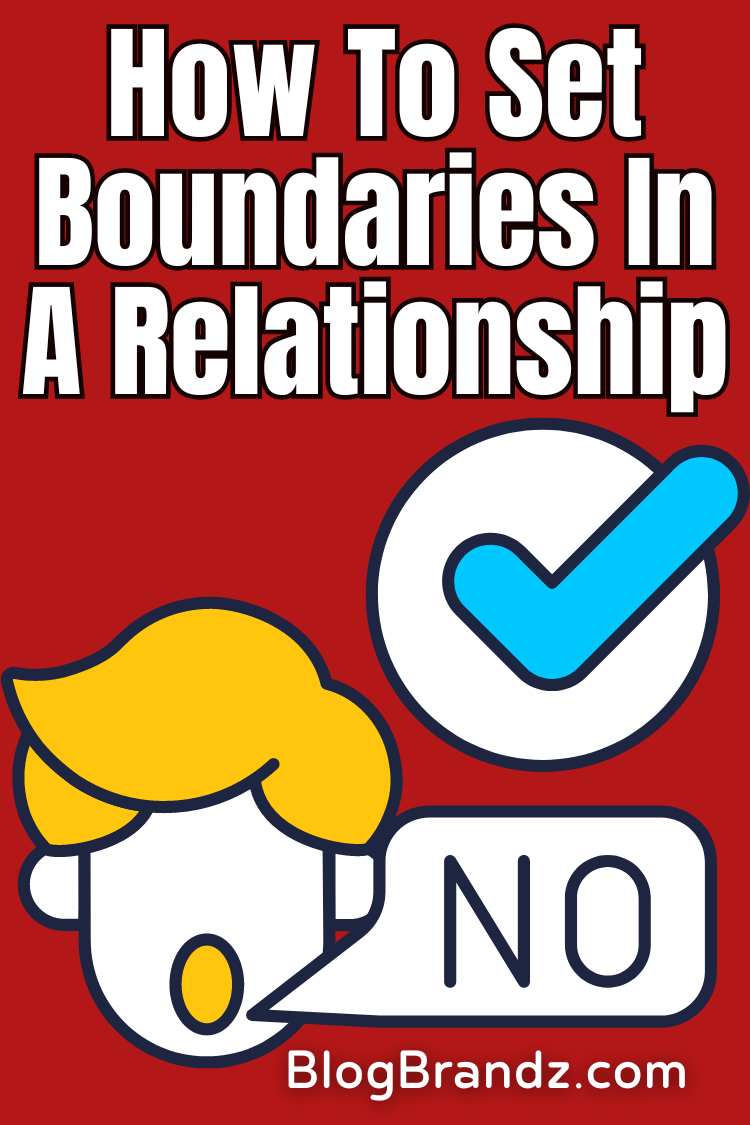Learn how to set boundaries in a relationship and establish healthy boundaries with practical tips for more balanced and fulfilling relationships.
Setting healthy boundaries is essential for maintaining respectful and fulfilling relationships. It involves communicating your needs, limits, and expectations clearly to others, while also respecting their boundaries.
In this guide, we’ll explore the importance of setting boundaries in various areas of life, including relationships, work, and personal well-being.
We’ll also provide practical tips and strategies for establishing and maintaining healthy boundaries, empowering you to cultivate more balanced and harmonious relationships.
“Daring to set boundaries is about having the courage to love ourselves, even when we risk disappointing others.” ~ Brené Brown
Contents
- What Are Boundaries in a Relationship?
- What Are The Different Types of Boundaries?
- How To Set Boundaries in a Relationship
- How To Handle People Overstepping Boundaries
- Learn How To Set Healthy Boundaries in Relationships
- #1. Free Training On How To Set Boundaries
- #2. Esther Perel MasterClass on Relational Intelligence
- #3. Assertive Communication Skills Masterclass
- #4. Complete Boundary Setting Course
- #5. How to Stop Being a People Pleaser in the Workplace
- #6. Beginners Guide: Boundaries, Self-love, & Self-care
- #7. Know Your Worth: Set Boundaries With Self-Confidence
- #8. Mastering Personal Boundaries in Life and Relationships
- #9. Good Boundaries and Goodbyes: Loving Others Without Losing the Best of Who You Are
- #10. Boundaries: When to Say Yes, How to Say No to Take Control of Your Life
- Personal Growth & Success Tips
What Are Boundaries in a Relationship?
Boundaries are guidelines, rules, or limits that a person sets to define acceptable behavior and interactions in relationships. They can be physical, emotional, or psychological and help individuals maintain their well-being, self-respect, and autonomy.
Healthy boundaries are essential for maintaining healthy relationships, as they enable individuals to communicate their needs, desires, and limits effectively. When no boundaries are established, individuals may feel overwhelmed, resentful, or taken advantage of.
Which action is a sign of unhealthy personal boundaries? One sign of unhealthy personal boundaries is allowing others to dictate your thoughts, feelings, and actions, without considering your own needs and desires.
Examples of boundaries in a relationship include setting limits on physical touch, respecting personal space, expressing emotional needs, and communicating openly and honestly.
“Setting boundaries is a way of caring for myself. It doesn’t make me mean, selfish, or uncaring because I don’t do things your way. I care about me too.” ~ Christine Morgan
What Are The Different Types of Boundaries?
There are several types of boundaries that people can establish in their relationships. Here are some common types:
#1. Physical Boundaries
Physical boundaries in relationships are essential for maintaining your comfort and safety. They include respecting personal space, physical touch, and sexual boundaries. These boundaries dictate who can touch you, how, and when.
For example, you might set a boundary about not engaging in sexual activities until both partners are ready and comfortable. Additionally, you might specify that you’re not comfortable with certain people hugging you or entering your personal space without permission.
Setting and communicating these boundaries clearly is crucial for ensuring that your physical boundaries are respected in your personal and workplace relationships.
#2. Emotional Boundaries
Emotional boundaries in relationships are vital for maintaining your emotional well-being and autonomy. These boundaries involve respecting each other’s feelings, thoughts, and emotional needs.
It’s about separating your emotions from others and taking responsibility for your own feelings. This might include setting limits on how much emotional support you can provide or not tolerating emotional manipulation.
It’s important to communicate these boundaries clearly and assertively to your partner, ensuring that both of you understand and respect each other’s emotional needs and limits.
By setting and maintaining healthy emotional boundaries, you can cultivate relationships that are supportive, respectful, and fulfilling.
#3. Communication Boundaries
Communication boundaries in relationships are crucial for maintaining respectful and healthy interactions. These boundaries involve how you communicate with each other and can include setting limits on yelling, name-calling, or discussing sensitive topics.
It’s important to establish clear and respectful communication boundaries early in a relationship to ensure that both individuals feel safe and heard. For example, you might set a boundary that you will not tolerate yelling or disrespectful language during disagreements.
By setting and respecting these boundaries, you can create a foundation of open and respectful communication in your workplace relationships.
#4. Material Boundaries
Material boundaries in relationships involve setting limits on your possessions and resources. This could include setting boundaries around sharing personal belongings or lending money.
For example, you might set a boundary that you are not comfortable lending large sums of money to your partner or that certain personal items (such as a personal diary) are off-limits for sharing.
Establishing these boundaries can help prevent misunderstandings and conflicts over material possessions, ensuring that both partners feel respected and valued in the relationship.
#5. Time Boundaries
Time boundaries in relationships are essential for maintaining a healthy balance between your relationship and other aspects of your life. These boundaries involve how you allocate your time and how others can access it.
This includes setting aside time for yourself or other relationships, respecting each other’s need for alone time, and setting limits on how much time you spend with certain people or how much time you dedicate to work versus personal activities.
By setting clear time boundaries, you can ensure that you prioritize your well-being and maintain a balanced and fulfilling life outside of your relationship.
#6. Trust Boundaries
Trust boundaries in relationships are crucial for building and maintaining a strong foundation of trust and respect in your relationship. These boundaries involve being honest and reliable with each other and setting boundaries around privacy.
For example, you might set a boundary that you will not share each other’s passwords without permission or that you expect honesty and transparency in all communications.
By setting and respecting trust boundaries, you can create a relationship built on mutual respect, honesty, and trust, ensuring that both partners feel safe and valued in the relationship.
#7. Intellectual Boundaries
Intellectual boundaries in relationships are important for maintaining respect and open communication. These boundaries involve your thoughts, ideas, and opinions, and they emphasize respecting others’ viewpoints while also expressing your own.
In a healthy relationship, both partners should feel comfortable sharing their thoughts and ideas without fear of judgment or ridicule.
Setting intellectual boundaries can help prevent misunderstandings and conflicts, allowing both partners to express themselves freely and respectfully. By respecting each other’s intellectual boundaries, you can create a relationship that is based on mutual respect and understanding.
#8. Digital Boundaries
With the rise of digital communication, setting boundaries around technology use has become important. Digital boundaries in relationships are essential for managing technology use and maintaining healthy communication habits.
These boundaries involve setting limits on screen time and establishing guidelines for when and how you respond to messages. For example, you might set a boundary that you will not use your phone during meals or that you will only respond to non-urgent messages during certain times of the day.
By setting clear digital boundaries, you can prevent technology from interfering with your relationship and ensure that you prioritize meaningful, in-person interactions.
“Boundaries are a part of self-care. They are healthy, normal, and necessary.” ~ Doreen Virtue
Establishing and respecting healthy boundaries can help you protect your well-being and is essential for a healthy and fulfilling relationship. It allows both partners to feel safe, respected, and understood, creating a strong foundation for intimacy and trust.
How To Set Boundaries in a Relationship
Learning how to set healthy boundaries in relationships is crucial for maintaining your self-respect and ensuring that your needs are met in a relationship.
“You have to learn to say no without feeling guilty. Setting boundaries is healthy. You need to respect and take care of yourself.” – Unknown
Here are some steps to help you set boundaries effectively:
#1. Know Your Limits
Knowing your limits is crucial for setting boundaries in relationships. Take time to identify what you’re comfortable with, including physical and emotional boundaries.
Determine your comfort level with physical affection and how much personal information you’re willing to share. Understanding these limits allows you to communicate them effectively to your partner, ensuring that your needs and boundaries are respected.
By setting and maintaining these boundaries, you can cultivate healthier and more fulfilling relationships built on mutual respect and understanding.
#2. Communicate Clearly
Effective communication is key to setting boundaries in relationships. Once you’ve identified your boundaries, it’s crucial to communicate them clearly and assertively to your partner.
Use “I” statements to express your feelings and needs without placing blame or accusing them. For example, instead of saying, “You always ignore me,” try saying, “I feel ignored when I don’t get a response to my messages.”
This approach encourages open and honest dialogue, fostering mutual understanding and respect in your relationship.
#3. Listen to Your Gut
Listening to your gut is essential for setting healthy boundaries in dating and workplace relationships. Pay close attention to your instincts and feelings in various situations.
If something feels off or uncomfortable, trust your intuition and set a boundary. Your inner voice is a powerful guide that can help you protect your well-being and establish boundaries that align with your values and needs.
Trusting your gut allows you to assertively communicate your boundaries, ensuring that they are respected in your relationships.
#4. Be Assertive
Being assertive is crucial for setting and maintaining healthy boundaries. It means standing firm in your boundaries without being aggressive or passive.
When communicating your boundaries, express them confidently and clearly, without apologizing or seeking approval. If your boundaries are crossed, don’t be afraid to enforce them assertively.
This might involve calmly but firmly reiterating your boundaries or taking appropriate action to protect your boundaries. Being assertive allows you to express your needs while respecting others, creating healthier and more respectful relationships.
#5. Set Consequences
Setting consequences is a crucial part of establishing and maintaining boundaries. Clearly communicate the consequences for violating your boundaries to your partner.
For example, you could say, “If you continue to do X, I will need to [take a specific action or set a boundary].” This approach helps reinforce the importance of your boundaries and encourages your partner to respect them.
It’s important to follow through with the consequences if your boundaries are repeatedly violated, as this demonstrates that you are serious about maintaining your boundaries and self-respect.
#6. Be Consistent
Consistency is key when it comes to setting boundaries. Once you’ve established your boundaries, it’s important to maintain them consistently.
This helps reinforce their importance and communicates to others that you are serious about your limits. When you consistently uphold your boundaries, you are more likely to be respected and your needs will be taken seriously.
Additionally, being consistent helps you build self-respect and confidence in your ability to assert your needs and maintain healthy boundaries in all aspects of your life.
#7. Seek Support
Seeking support is important if you’re struggling to set boundaries. A therapist, counselor, or trusted friend can provide guidance, encouragement, and perspective.
They can help you identify your boundaries, practice assertive communication, and navigate challenging situations. Additionally, seeking support can help you build confidence in setting and maintaining boundaries, leading to healthier and more fulfilling relationships.
Don’t hesitate to reach out for help if you need it; setting boundaries is a skill that can be learned and improved with support and practice.
#8. Respect Other’s Boundaries
Respecting others’ boundaries is just as important as setting your own. Listen to their needs and be willing to compromise when necessary. Understand that everyone has their own limits and comfort levels, and it’s essential to respect and honor them.
By showing respect for others’ boundaries, you create a foundation of mutual understanding and respect in your relationships. This can lead to healthier and more harmonious interactions, where both parties feel valued and respected.
#9. Reevaluate as Needed
It’s important to recognize that boundaries can change over time. As you grow and evolve, your needs and limits may shift, requiring adjustments to your boundaries.
Periodically reevaluating your boundaries allows you to ensure that they continue to align with your values and goals. Additionally, changes in your circumstances or relationships may necessitate adjustments to your boundaries.
By staying open to reevaluation and making changes as needed, you can maintain healthy and effective boundaries that support your well-being and growth.
Setting boundaries is about taking care of yourself and maintaining healthy relationships. Learning how to set healthy boundaries in dating and marriage, with parents, adult children, or workplace relationships can help you build a strong foundation of mutual respect and understanding in all your relationships.
How To Handle People Overstepping Boundaries
Respecting boundaries is crucial for maintaining healthy relationships. Handling people who overstep your boundaries can be challenging but important for maintaining your well-being and self-respect.
“You teach people how to treat you by what you allow, what you stop, and what you reinforce.” ~ Tony Gaskins
Here are some steps you can take:
#1. Recognize the Boundary Violation
Recognizing when someone is overstepping your boundaries is crucial for maintaining healthy relationships. This awareness requires introspection and reflection on your feelings.
Identify the specific boundary that is being crossed and how it makes you feel. This process helps you understand your limits and communicate them effectively to others.
By recognizing boundary violations, you can assertively address them and protect your well-being. It also allows you to maintain respect for yourself and your boundaries in all your interactions.
#2. Communicate Clearly
Communicating clearly is essential when addressing boundary violations. Calmly and assertively express your discomfort or the specific boundary that has been crossed using “I” statements. For example, say, “I feel uncomfortable when you do X. I would appreciate it if you could respect my boundary by not doing that.”
This approach helps the other person understand your feelings and needs without placing blame or creating conflict. It also sets a clear expectation for how you expect to be treated, promoting mutual respect and understanding in your relationship.
#3. Practice Self-Care
Practicing self-care is crucial when navigating boundary violations. Engage in activities that help you relax and recharge, such as yoga, meditation, reading, or spending time in nature.
Taking care of yourself physically, emotionally, and mentally can help you cope with stress and maintain a healthy perspective. It’s important to prioritize your well-being and set aside time for activities that nourish your mind, body, and soul.
By practicing self-care, you can strengthen your resilience and better cope with boundary challenges, ultimately leading to a more balanced and fulfilling life.
#4. Reassess the Relationship
Reassessing the relationship is crucial if someone repeatedly oversteps your boundaries despite your efforts to communicate them. Evaluate whether the relationship is healthy for you and if it aligns with your values and well-being.
Consider whether the other person respects your boundaries and makes an effort to change their behavior. If the relationship continues to be detrimental to your mental, emotional, or physical health, it may be necessary to distance yourself or set stricter boundaries.
Your well-being should always be a top priority, and reassessing the relationship can help you determine the best course of action for your overall health and happiness.
#5. End Contact If Required
Toxic individuals, particularly those with personality traits associated with the Dark Triad (narcissism, Machiavellianism, and psychopathy), are often less likely to respect boundaries.
Their lack of empathy and disregard for others’ feelings and rights can lead them to push boundaries without hesitation. They may manipulate or exploit others to get what they want, disregarding any established limits or boundaries.
Dealing with toxic individuals requires a firm and assertive boundary setting, as well as a willingness to enforce consequences for violations. It may also be necessary to limit or end contact with toxic individuals to protect your well-being.
“Boundaries are a sign of self-respect. They are the physical, emotional, and mental limits we set to protect ourselves from being manipulated, used, or violated by others.” – Saad Tasleem
Remember, setting and enforcing boundaries is about taking care of yourself and asserting your needs. It’s okay to prioritize your well-being and set limits on how others treat you.
Learn How To Set Healthy Boundaries in Relationships
Learn how to set healthy boundaries in relationships with these resources on effective communication and assertiveness.
#1. Free Training On How To Set Boundaries
Are you struggling with boundary issues at work or home? Do you find it hard to say no to requests at work or feel overwhelmed by household responsibilities? Perhaps you have a friend whose conversations leave you feeling drained or unhappy.
These challenges often stem from disordered boundaries, but there is a solution. You can become adept at setting healthy boundaries! Learn how to set healthy boundaries in relationships with a free 3-video training series featuring Boundary Boss author, Terri Cole.
Psychotherapist, relationship expert, and Boundary Boss author, Terri Cole, has assisted thousands in reclaiming their lives by addressing this core issue. In her free 3-session video series, Creating Better Boundaries, you’ll discover her most effective skills and strategies for advocating for your needs and living authentically.
These sessions are packed with insights and practical tips that can immediately enhance your relationships at work, at home, and with more challenging friends. Join this free series for empowering insights, self-assessments, boundary script sentence starters, and practical advice for creating better boundaries in crucial areas of your life.
Healthy boundaries lead to better relationships, making this training invaluable for anyone seeking to improve their relationships at work, at home, or with friends.
Free Healthy Relationship Boundaries Training Series
#2. Esther Perel MasterClass on Relational Intelligence
In this Relational Intelligence MasterClass, psychotherapist Esther Perel teaches the power of connecting with others. Discover how communication and relational intelligence can help you create deeper, more meaningful connections in all aspects of life.
Esther Perel, known for her innovative approach to love and relationships, shares methods for developing deeper connections with everyone. Rethink intimacy, communication, and trust to improve relationships in the bedroom, boardroom, and beyond.
Develop self-awareness and empathy to influence the connections you make. Learn to navigate and negotiate boundaries in personal and professional life. Identify the roles you play and how they impact your relationships. Cultivate intimacy to establish and deepen connections in all areas of life.
Click here to preview Esther Perel’s MasterClass
#3. Assertive Communication Skills Masterclass
Assertive communication is critical for future leaders, new managers, and introverted people in social situations.
When you know how to communicate assertively, you can say “no” without feeling guilty, set boundaries to protect your time, priorities, and goals, articulate requests clearly and confidently, and easily deal with awkward situations.
The Assertive Communication Skills Masterclass will show you how to tell people what you truly think and feel, so you can set boundaries when you need to.
Preview the Assertive Communication Skills Masterclass
#4. Complete Boundary Setting Course
This comprehensive boundary-setting course is designed to help you set and maintain boundaries with ease, free from guilt, anger, and fear. This guide empowers you to confidently establish boundaries without fear of disappointing others.
Learn how to begin setting boundaries without guilt, clarify the process of setting healthy boundaries, and explore alternative ways to say “no” effectively. Enhance your communication skills by learning to communicate clearly, openly, and honestly, while remaining firm on what you can and cannot do.
Preview this Complete Boundary Setting Course
#5. How to Stop Being a People Pleaser in the Workplace
In this course on How to Stop Being a People Pleaser in the Workplace, you’ll understand what drives this behavior, look into the root causes that make you default to people-pleasing, and gain self-awareness to understand these motivations, so you can challenge them.
Learn empowering tools and strategies to set healthy boundaries and say no with confidence. Clearly define your values and priorities to guide your decisions, making it easier to assert boundaries. Practice confidently saying no when requests conflict with your values or priorities.
Challenge negative self-talk that may undermine your confidence in setting boundaries. With these strategies, you can shift towards a healthier balance of meeting your own needs while maintaining positive relationships at work.
Preview this Boundary Setting Course
#6. Beginners Guide: Boundaries, Self-love, & Self-care
Embark on a transformative journey with the Beginner’s Guide to Boundaries, Self-Love, & Self-Care. This course is designed to help you become more confident in setting boundaries and break free from people-pleasing behaviors.
Discover the root causes of people-pleasing, often stemming from beliefs and unmet needs. Engage in activities that promote self-love, reinforce your self-worth, and strengthen your identity. Utilize the included digital workbook to track your progress and stay motivated on your journey.
Learn the basics of setting boundaries, including how to determine the strength of your boundaries and what to do if someone challenges them. Gain insights into maintaining healthy boundaries and overcoming roadblocks, such as the reactions of others or your own limiting beliefs.
By building a strong foundation of self-love and boundary-setting skills, you can transform your life and create healthier, more fulfilling relationships.
Preview this Boundary Setting Course
#7. Know Your Worth: Set Boundaries With Self-Confidence
Embark on a transformative journey to increase self-worth, raise your standards, and set healthy boundaries with confidence. This comprehensive course will help you unlock the power of boundaries, leading to a life of confidence and fulfillment.
Through guided self-reflection, you’ll gain insight into your worth and learn to set boundaries that align with your values and goals. Explore the fundamentals of boundaries and learn how they are essential for maintaining healthy relationships. Develop self-awareness and identify your personal goals as you learn to become your true self.
By the end of this course, you’ll emerge as an empowered boundary-setter, equipped with the tools to attract supportive, mature relationships into your life. Say goodbye to feeling overwhelmed and mistreated, and embrace a life where you prioritize your well-being without guilt.
Preview this Boundary Setting Course
#8. Mastering Personal Boundaries in Life and Relationships
Mastering Personal Boundaries in Life and Relationships is a detailed course focused on cultivating healthy relationships with ourselves and enhancing interpersonal relations with others. You’ll explore the foundational principles of boundaries and their significance in various aspects of life, including physical, emotional, and interpersonal boundaries.
Understand the positive impact of establishing and maintaining healthy boundaries on your well-being and relationships. Assess your current boundaries to identify strengths and areas for improvement. Learn the relationship between your personal values, needs, and boundaries.
The course covers communicating and establishing boundaries effectively, emphasizing the importance of clear and specific boundaries. You’ll also learn the benefits of defining your boundaries with precision and the importance of assertive communication when communicating your boundaries.
You’ll also explore real-life applications of boundaries in various scenarios and techniques for addressing negative emotions like guilt, stress, and fear when establishing and maintaining healthy boundaries.
Preview this Boundary Setting Course
#9. Good Boundaries and Goodbyes: Loving Others Without Losing the Best of Who You Are
Good Boundaries and Goodbyes: Loving Others Without Losing the Best of Who You Are is a compelling read that offers practical advice on setting and maintaining healthy boundaries in relationships.
Lysa TerKeurst skillfully explores the importance of self-care and self-respect, emphasizing the impact of boundaries on one’s overall well-being.
Through insightful anecdotes and relatable examples, she provides valuable insights into navigating challenging interpersonal dynamics with grace and assertiveness.
Whether you’re struggling to establish boundaries or seeking to strengthen existing ones, this book offers valuable guidance and encouragement to help you cultivate healthier, more fulfilling relationships.
Click here to buy Good Boundaries and Goodbyes
#10. Boundaries: When to Say Yes, How to Say No to Take Control of Your Life
Discover the transformative power of boundaries with the New York Times bestseller, Boundaries: When to Say Yes, How to Say No to Take Control of Your Life, by John Townsend, Henry Cloud, and Henry O. Arnold.
This groundbreaking book has empowered over four million readers to reclaim control over their lives by learning the art of saying yes to what truly matters and confidently saying no to what doesn’t align with their values.
Whether you feel overwhelmed, constantly catering to others’ needs, or neglecting your own well-being, Boundaries offers practical guidance to help you establish healthy, biblical boundaries in every aspect of your life.
Click here to learn how to set boundaries
Personal Growth & Success Tips
-
- Free Success Formula Webcast with Jack Canfield
- 12 Success Habits of Highly Successful People
- 25 Professional Skills for Success in the Workplace
- Best Emotional Self-Care Tips For Writers And Creatives
- How Personality Tests Can Help You Unlock Your Potential
- How to Identify Narcissistic Behavior Traits & Red Flags
- How To Control Your Emotions, Be Resilient & Stay Calm Under Pressure
- How To Learn Powerful Negotiation Skills In The Workplace
- How to Find a Business Partner for Entrepreneurial Success
- 25 Entrepreneur Characteristics Of Successful Business Owners
- How to Build Good Relationships as a Success-Driven Entrepreneur
- What Are The Key Leadership Skills To Develop In Future Leaders?
© 2024, Priya Florence Shah. All rights reserved.
Priya Florence Shah is a bestselling author and an award-winning blogger. Check out Devi2Diva, her book on emotional self-care for women. In her spare time, Priya writes science-fiction novels and poetry and chills with her two-legged and four-legged kids.
Discover more from Business & Branding Tips
Subscribe to get the latest posts sent to your email.





















